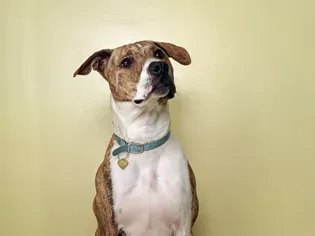How to Train an Older Dog to Do New Tricks
Updated on 04/26/24

Unlocking the Potential: A Comprehensive Guide to Training Older Dogs New Tricks
In the realm of canine companionship, age is but a number when it comes to teaching new tricks. Contrary to popular belief, older dogs possess the same remarkable capacity for learning as their younger counterparts. With patience, understanding, and a tailored approach, you can unlock the hidden potential within your aging canine companion, empowering them to master new skills and deepen the bond you share.
The Benefits of Training Older Dogs
Beyond the sheer joy of watching your beloved pet perform impressive tricks, there are numerous cognitive and behavioral benefits associated with training older dogs:
* Improved brain function: Mental stimulation through training helps keep dogs mentally sharp and reduces the risk of age-related cognitive decline.
* Strengthened bond: Training fosters a deeper connection between you and your dog, as it involves positive reinforcement and teamwork.
* Reduced anxiety and boredom: Providing your dog with mental and physical challenges through training can alleviate boredom and anxiety, promoting overall well-being.
* Enhanced obedience: Trained dogs are better able to follow commands and navigate everyday situations, ensuring a more harmonious relationship.
* Improved behavior: Training can address problematic behaviors in older dogs, such as excessive barking or jumping, by providing them with an outlet for their energy and reinforcing desired actions.
Tailoring Training to Older Dogs
While the principles of dog training remain consistent regardless of age, certain adaptations are crucial for successful training of older dogs:
* Shorter training sessions: Keep training sessions brief, no longer than 5-10 minutes, to avoid overwhelming your dog.
* Reward-based approach: Use high-value treats, praise, and petting as rewards to motivate your dog. Avoid using punishment or negative reinforcement.
* Patience and positive reinforcement: Be patient and encouraging throughout the training process. Reward even small steps towards the desired outcome.
* Consider physical limitations: Be mindful of any age-related physical limitations your dog may have. Adjust exercises accordingly and consult with a veterinarian if necessary.
Effective Training Techniques for Older Dogs
Numerous training techniques have proven effective in teaching older dogs new tricks. Here are a few examples:
1. Clicker Training
Clicker training uses a distinctive sound (the click of a clicker) to mark the exact moment your dog performs the desired behavior. The click serves as a bridge between the behavior and the reward, allowing for precise reinforcement and faster learning.
2. Luring
Luring involves using a treat or toy to guide your dog into the desired position or behavior. By gradually fading the lure as your dog progresses, you can teach them the trick without relying on constant treats.
3. Shaping
Shaping is a gradual process where you reward your dog for successive approximations of the desired behavior. By breaking down the trick into smaller steps and rewarding each step, you can guide your dog towards the final goal.
4. Target Training
Target training teaches your dog to touch a specific object, such as a target stick or a piece of tape on the floor. Once your dog masters this concept, you can use it to teach them a variety of tricks, such as jumping over obstacles or fetching objects.
Sample Tricks for Older Dogs
To inspire your training journey, here are a few specific tricks that are particularly well-suited for older dogs:
* Shake a paw: This simple trick involves teaching your dog to lift one of their paws and shake it with you.
* Roll over: Rolling over is a fun and playful trick that requires some coordination and flexibility.
* Speak on command: Teaching your dog to speak on command can be a useful way to communicate and engage with them.
* Fetch: Fetching is a classic canine game that provides both mental and physical stimulation.
* Come when called: A solid recall is essential for ensuring your dog's safety and well-being.
Conclusion
Training an older dog new tricks is a rewarding experience that not only strengthens the bond between you and your canine companion but also promotes their cognitive and behavioral well-being. By embracing patience, customizing training techniques to their age, and celebrating their successes, you can unlock the hidden potential within your aging dog, bringing joy and enrichment to their golden years. Remember, every dog is unique, so adjust the training process accordingly and consult with a veterinarian or professional trainer if you encounter any challenges.
Explore More Pets

Basic Training
Puppy and Baby Introductions

Working Dog Breeds
All About Search and Rescue Dogs

Dog Treatments
Puppy Vaginitis: Signs, Causes and Treatment

Dog Adoption
After More Than 1,200 Days in the Shelter, Coco Goes Home

Basic Training
How to Train Your Puppy to Go on Potty Pads

Hybrid Dog Breeds
The Difference Between a Mutt, Mixed Breed, or Designer Dog?

Dog Treatments
Nail Problems in Dogs

Puppies
7 Reasons Why Two Dogs Are Better Than One